AMD should enter the Copilot+ generation of PCs with the new Ryzen AI 300 series, a mobile processor with an NPU that AMD claims will lead the industry with 50 TOPS of AI power.
AMD’s Ryzen AI series not only breaks ground in terms of AI, but in CPU capabilities as well. The chip family is AMD’s first Zen 5 processor, featuring double-digit performance gains compared to the previous generation. It also contains a robust integrated GPU, plus an RDNA 3.5-capable Radeon core with up to 16 compute units, depending upon the model.
“We’re reimagining what it means to build a truly intelligent and personalized PC experience,” said Mike Jasinski, an AMD product manager, in a recorded briefing with reporters.
AMD and its partners — Acer, Asus, HP, Lenovo, and MSI, among others — will begin shipping the Ryzen AI 300 in July.
“AI is our number one priority,” said Dr. Lisa Su, AMD’s chief executive, in a keynote address opening Computex.
AMD Ryzen AI 300 series chips: Specs and details
Though there are only two new Ryzen AI 300 chips to choose from, their names continue the trend of utterly unmemorable model numbers. AMD is offering either the Ryzen AI 9 HX 370 or the Ryzen AI 9 365, differentiated by the number of core counts, clock speeds, and the capabilities of the integrated GPU. The NPU — referred to as “Strix Point” — remains the same in both processors.
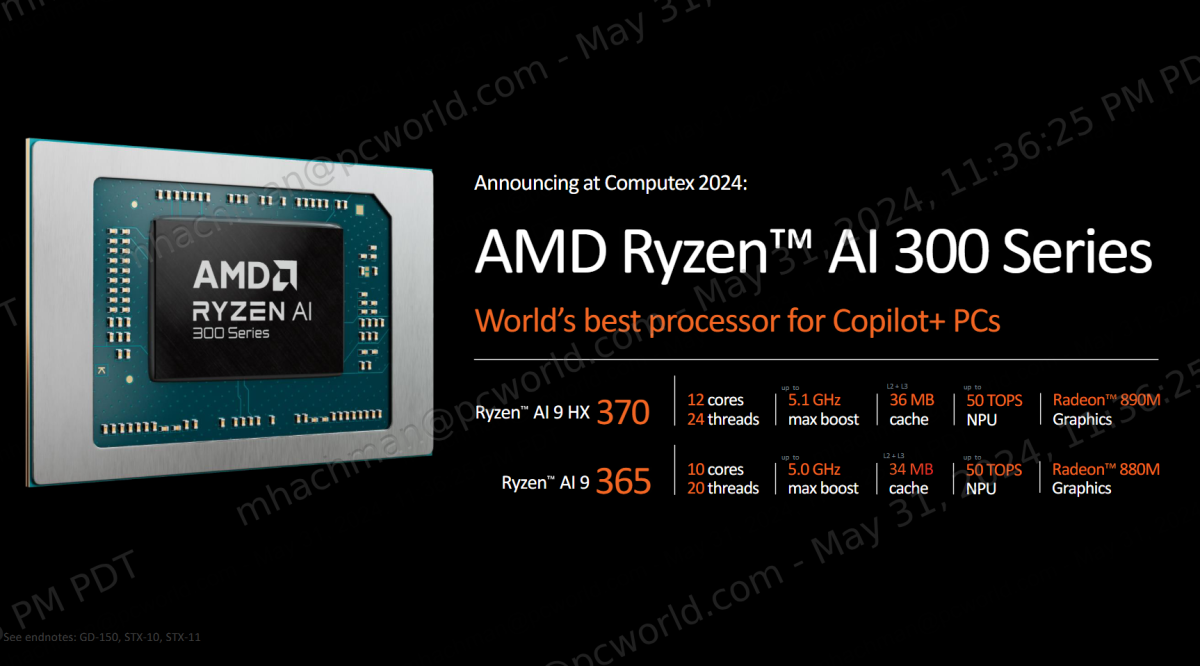
AMD
The Ryzen AI 9 HX 370 includes 12 cores and 24 threads, combining 4 Zen 5 cores with 8 older, more power-effective Zen 4C cores. It also includes a Radeon 890M graphics core with 16CUs. The Ryzen 9 AI 365 includes 10 cores (4 Zen 5, 6 Zen 5C) and 20 threads, with a Radeon 880M (12 CUs) inside. The two chips max out at 5.1GHz and 5.0GHz in terms of turbo performance, respectively.
AMD is touting gains over the Qualcomm Snapdragon X Elite in terms of performance, and over the older Intel Core Ultra 185H, a member of the “Meteor Lake” family of processors. Intel is expected to launch its latest Core Ultra processor, “Lunar Lake,” at the Computex show later this week.
Built for the AI era
Forgive AMD for being a little sensitive on the subject of AI. Microsoft recently launched its Copilot+ program in conjunction with new experiences in Windows 11, including a PC search engine called Recall, as well as generative AI experiences in Paint and Photos. Although AI can and will continue to use the cloud — as Windows Copilot in the PC currently does — chip vendors are looking forward to a day where AI will be run on the PC to minimize latency, preserve privacy, and increase overall production.
For now, AMD believes that it has a leg up on the competition. What AMD calls its 3rd Gen Ryzen AI or XDNA 2 generates 50 TOPS from the NPU alone, in part due to what AMD calls “enhanced AI tiles” with additional multitasking. That easily outclasses the 16 TOPS of the earlier Ryzen 8040, but also the 38 TOPS of the Apple M4. Even the 45 TOPS of Qualcomm’s Snapdragon X Elite falls short.
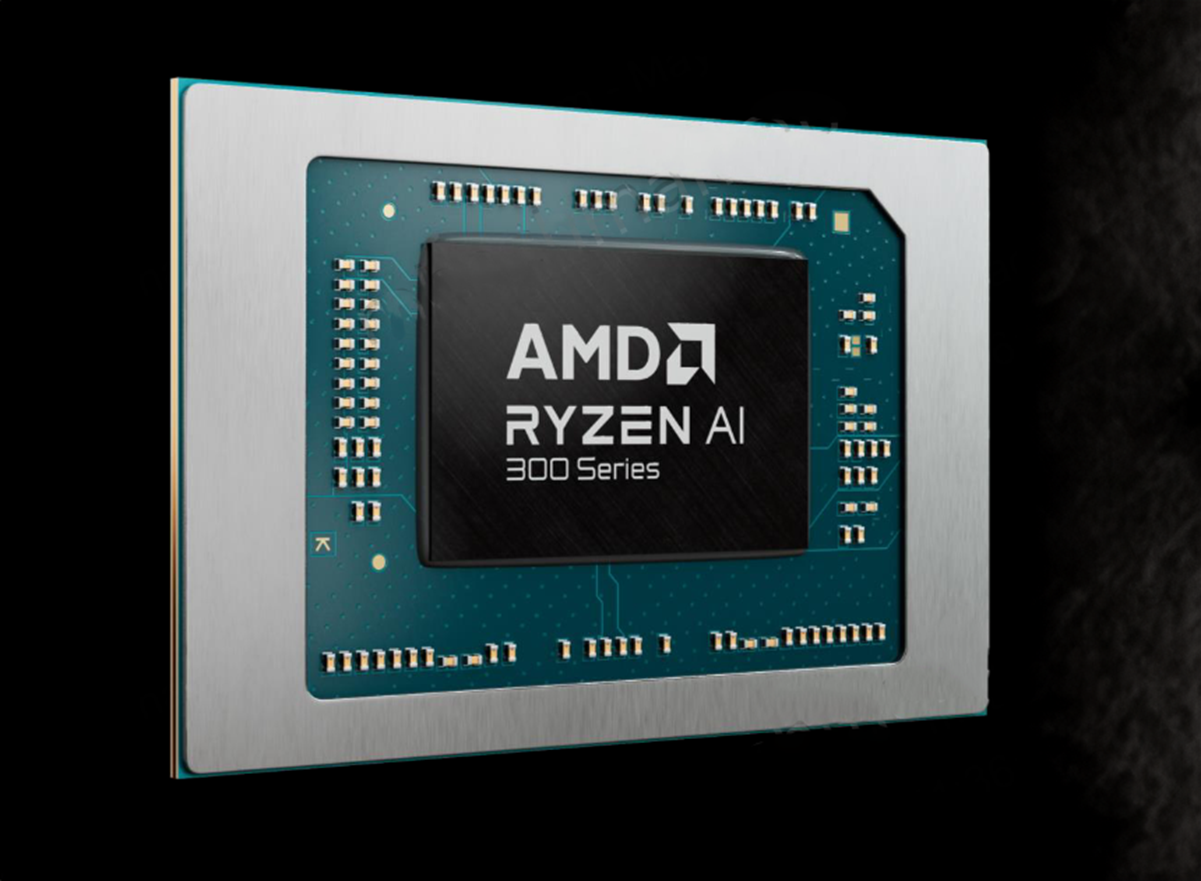
AMD
This matters, because Microsoft has set 40 TOPS as the minimum for Copilot+ experiences like Recall. It’s not clear whether AMD or PC makers that use the chip can claim that they’re Copilot+ compliant, but AMD is at least claiming that it’s Copilot+ “ready.” (Individual laptops will still need to include a minimum of 16GB of RAM and 256GB of storage to meet Copilot+ requirements.)
AMD believes that LLMs or AI chatbots will be five times more responsive than on the older Ryzen 9 8940S. In part, that’s because of some engineering magic the Ryzen AI 300 employs.
LLMs can use 8-bit integers to maximize performance, or the time in which tokens (text) are analyzed and generated. But speed doesn’t always equal accuracy, and 16-bit floating-point operations can provide better responses. More and more models use quantization as an assist — it’s essentially image compression for LLMs, with the hope that the process will shrink file sizes without using accuracy. AMD is using what it calls a “block FP16 NPU”, which is designed to combine the best of both worlds: accuracy and speed.
AMD Ryzen AI 300 benchmarks
For many people, however, they want to know one thing: how fast is the Ryzen AI 300?
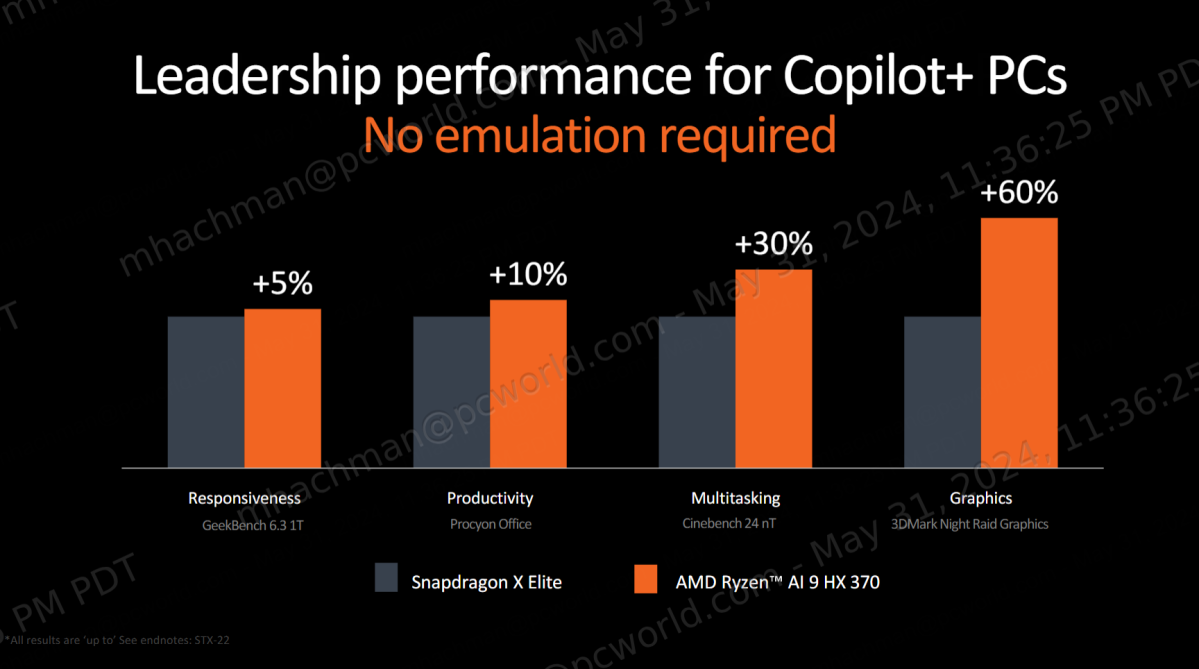
Intel
AMD says that its chip will outperform a Snapdragon X Elite in terms of performance…and the lack of a need for emulation.
Remember, though, that Qualcomm doesn’t disclose its thermal power envelope, so it’s unclear how accurate of a direct comparison this is. On the other hand, this isn’t AMD’s fault.
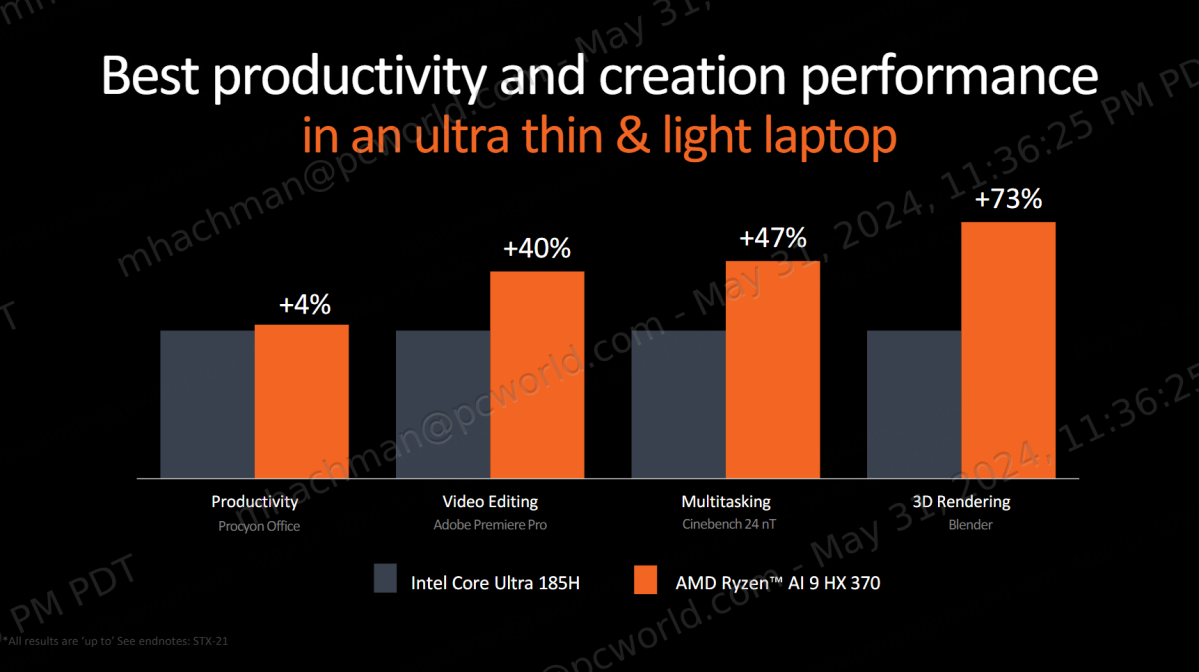
Intel
AMD compared its Ryzen AI 9 HX 370 processor against an Intel Ultra 9 185H, a Meteor Lake chip. AMD’s own tests found that it handily outperformed Intel’s chip in several categories. But AMD didn’t disclose how fast the Ryzen AI 300 is against its own, earlier chips, either.
Finally, there’s gaming, which AMD believes to be part of its DNA with its ATI Technologies acquisition, which later became the Radeon graphics division. Here, AMD believes it can wipe the floor with the Core Ultra 185H, too.
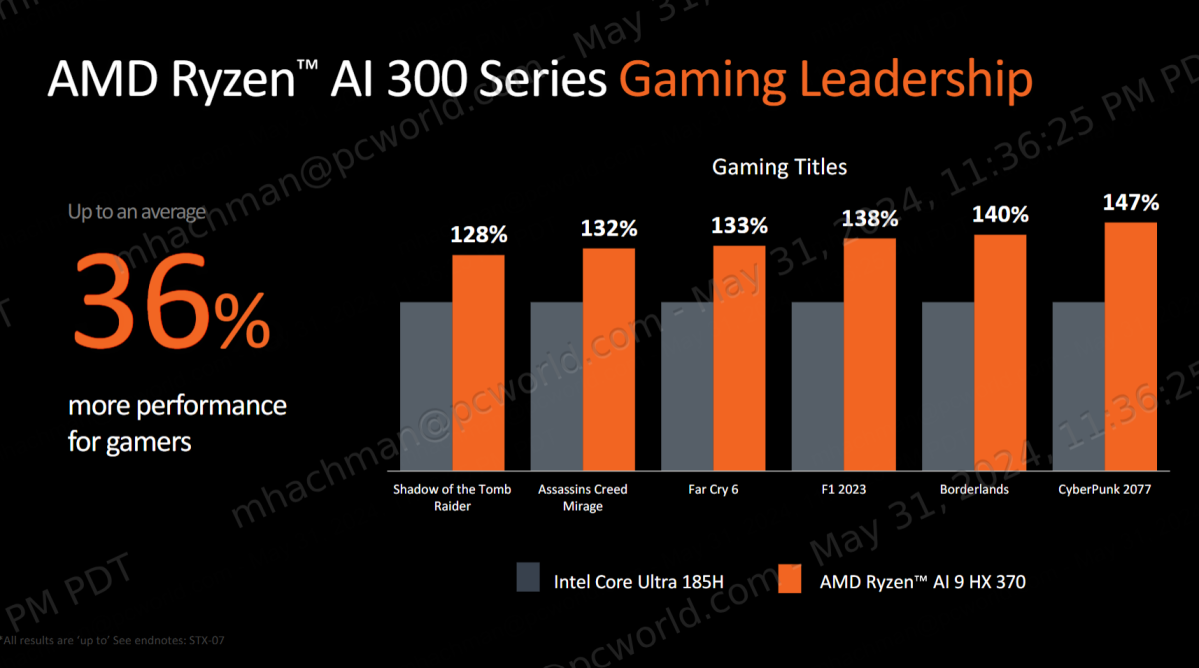
Intel
We’ll have to wait until we can get AMD’s Ryzen AI 300 series in to test, of course. Look for the chip in systems like the Asus ZenBook S 16, Asus ProArt P16, and Asus ROG Zephyrus G16, as well as the MSI Stealth A16 AI and the similar MSI Prestige A16 AI, too.




